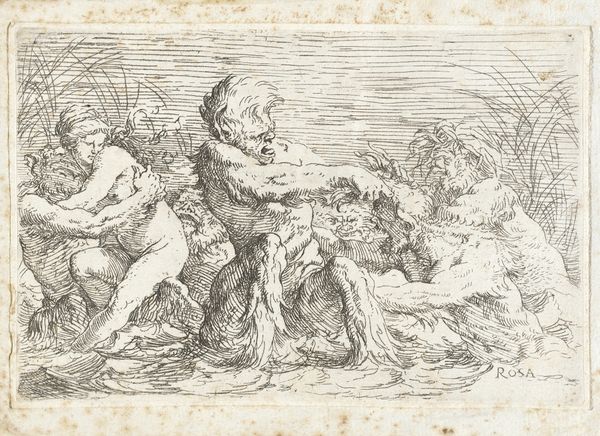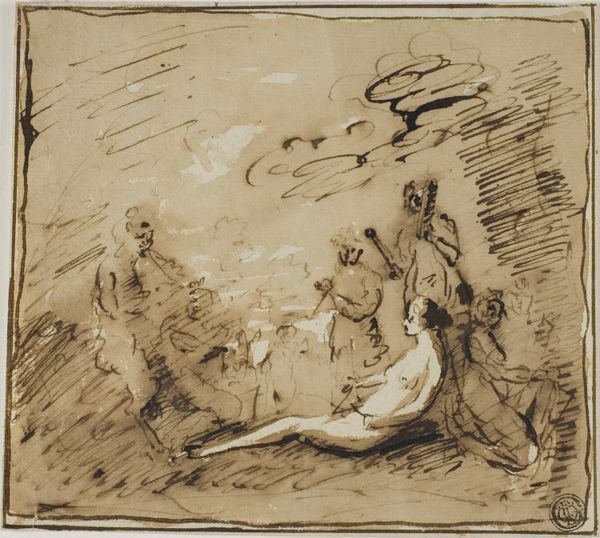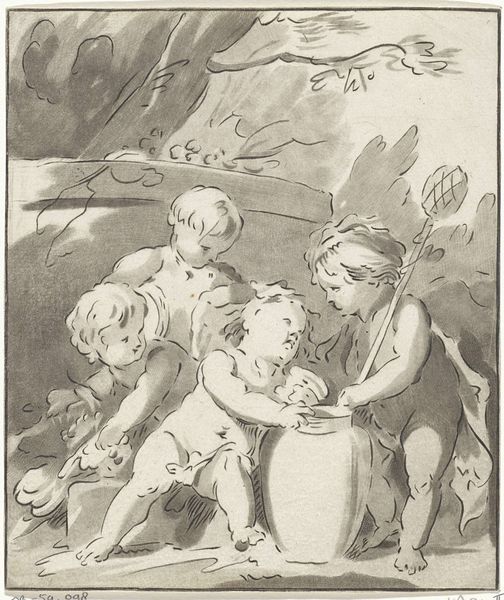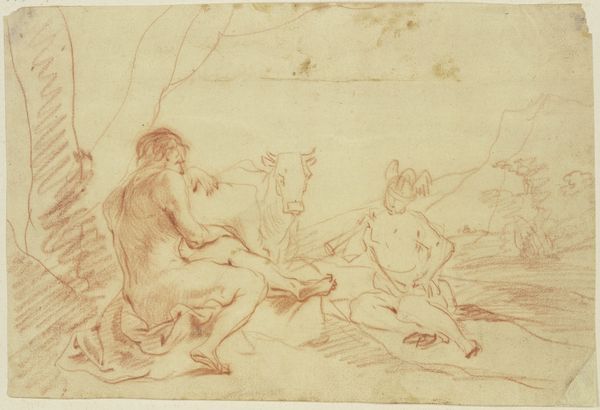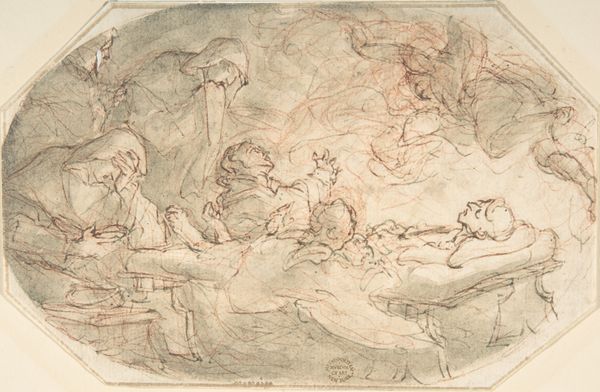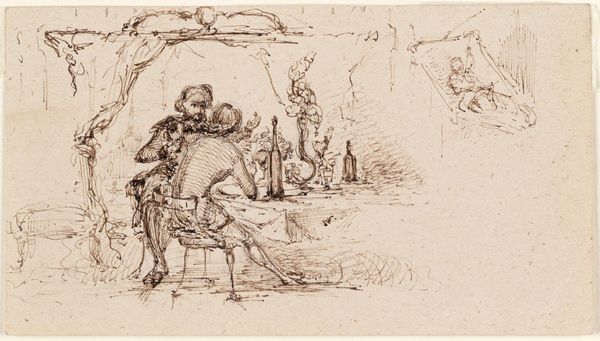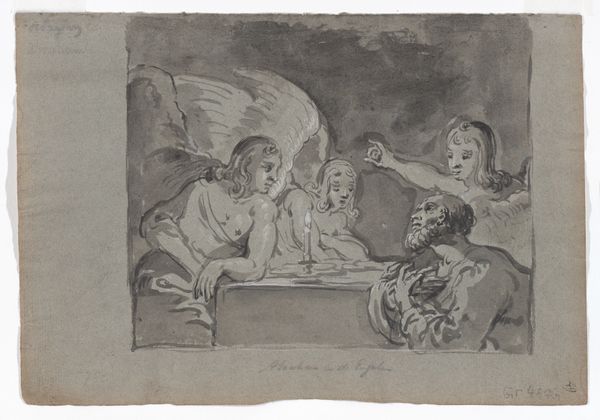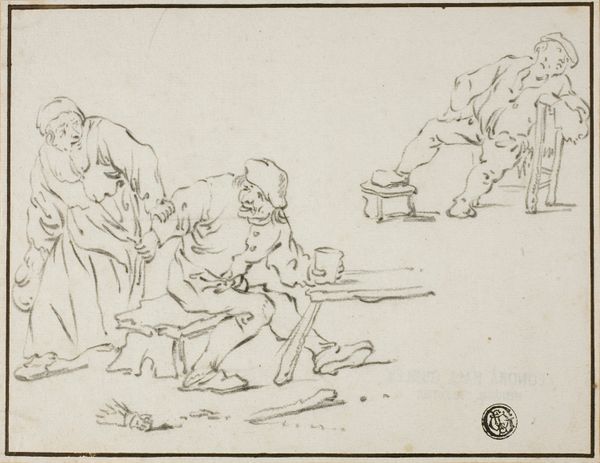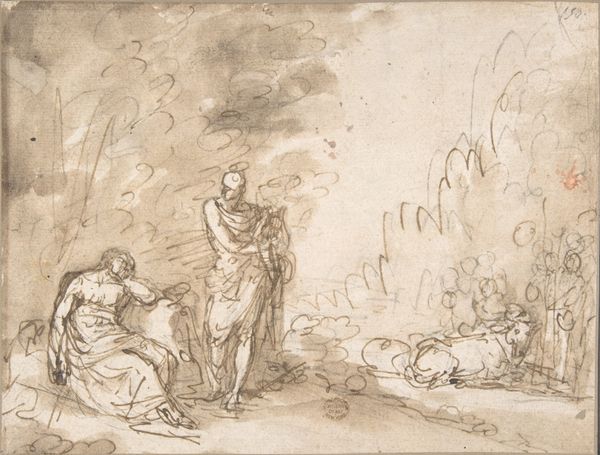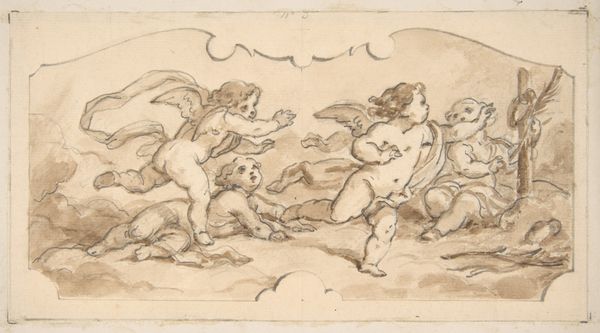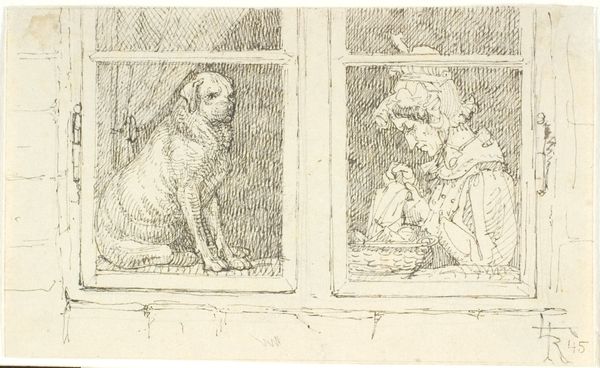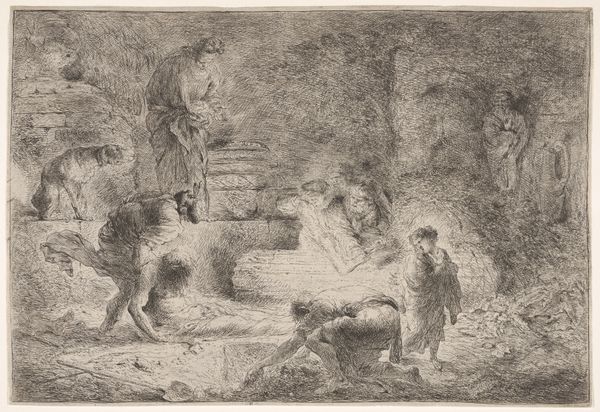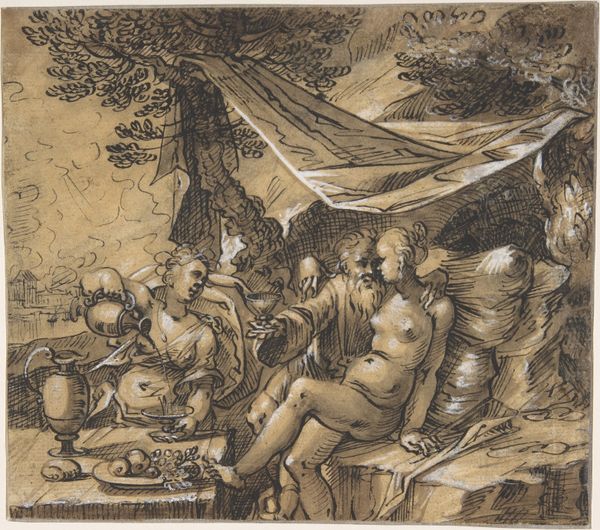
drawing, ink, engraving
#
drawing
#
neoclacissism
#
ink drawing
#
figuration
#
ink
#
genre-painting
#
nude
#
engraving
Dimensions: 118 mm (height) x 172 mm (width) (plademaal)
Editor: This is "Three Naked Small Boys Making Music," a drawing made with ink by J.F. Clemens around 1770. The carefree playfulness gives me a strong sense of idyllic childhood. What do you see in this piece? Curator: It’s a beautiful example of Neoclassical aesthetics. Look at the idealized figures and the emphasis on form, echoing a longing for the perceived purity of ancient Greece. But consider the power dynamics embedded in this seemingly innocent scene. Who has the privilege to depict such carefree childhoods? Editor: That’s an interesting point. I hadn’t thought about it that way. So, you're saying the artwork, despite appearing innocent, participates in a larger discourse of class and privilege? Curator: Exactly. The children, though seemingly universal symbols of innocence, are rendered through a very specific, elite lens. How might their nudity and musicality be interpreted within the context of the Enlightenment's fascination with both naturalism and social control? Think of whose bodies are valorized, and whose are ignored. Editor: It does feel curated and not a candid depiction of childhood. So much is left out of the frame that relates to other ways children lived at the time. Curator: Precisely. Whose experiences are silenced or marginalized to construct this ideal? And what socio-political function does such an ideal serve? Editor: I’m beginning to see how this idyllic scene is also making an argument about a very specific version of childhood, even as it obscures others. Curator: It invites us to consider not just what we see, but what remains unseen, or actively erased, in the construction of historical narratives. What can art uncover about what culture hides? Editor: Thinking about the "silences" of the work brings new insights into the dominant voices that were heard then – and maybe now as well. Thank you.
Comments
No comments
Be the first to comment and join the conversation on the ultimate creative platform.
